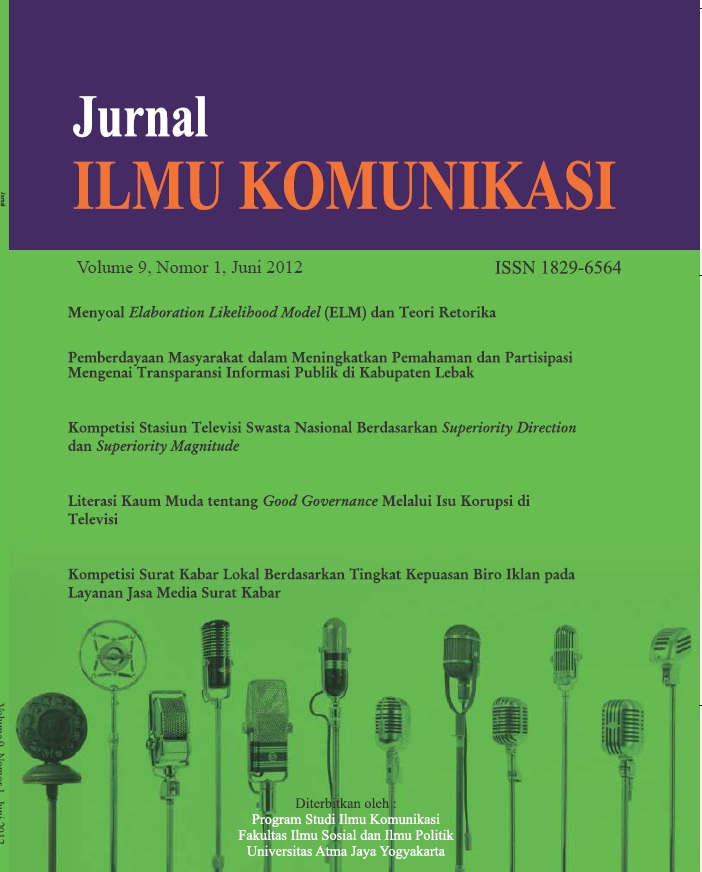Kompetisi Stasiun Televisi Swasta Nasional Berdasarkan Superiority Direction dan Superiority Magnitude
DOI:
https://doi.org/10.24002/jik.v9i1.185Abstract
Abstract: Uses and gratification theory is employed particularly as the teoritical frame of the research to examine the extent to which ten national television stations compete to satisfy Indonesian audiences. In particular, two main concepts of that theory namely audiences “gratification sought and gratifications obtained, are broken down and counted based on superiority direction and superiority magnitude. In general, the findings show that those televisions have satisfied their audiences, although in terms of gratifications to dispersal motives, they haven’t satisfied as much as it was expected. Significant competition occurs between TRANSTV and TRANS7, RCTI and SCTV, and TVONE and METROTV. TVONE become the most satisfiyng television station.
Abstrak: Teori Uses & Gratification menjadi dasar penelitian ini untuk mengukur bagaimana kompetisi yang terjadi di antara sepuluh stasiun televisi yang bersiaran secara nasional di Indonesia. Aplikasi dari teori tersebut dimunculkan dalam konsep kepuasan yang diharapkan dan kepuasan yang diperoleh ketika menonton acara televisi dan didasarkan pada penghitungan superiority direction dan superiority magnitude. Sepuluh stasiun televisi yang diteliti telah dapat memuaskan audiensnya, meskipun untuk kepuasan atas motif pengalihan masih belum dapat melampaui kepuasan yang diharapkan. Kompetisi yang signifikan terjadi antara TRANSTV dengan TRANS7, RCTI dengan SCTV serta TVONE dengan METROTV. TVONE menjadi stasiun televisi yang menduduki peringkat pertama dalam memberikan kepuasan tertinggi kepada audiens.
Downloads
Published
How to Cite
Issue
Section
License
Jurnal ILMU KOMUNIKASI is an academic journal. As such, it is dedicated to the open exchange of information. For this reason, JIK is freely available to individuals and institutions. Authors who publish in Jurnal ILMU KOMUNIKASI will release their articles under the Creative Commons Attribution (BY) License. This license allows anyone to copy and redistribute the article in any medium or format as well as remix, transform, and build upon the material for any purpose, even commercially as long as they credit the authors for the original creation. For details of the rights authors grants users of their work, see the "human-readable summary" of the license, with a link to the full license. (Note that "you" refers to a user, not an author, in the summary)
 This work is licensed under a Creative Commons Attribution 4.0 International License.
This work is licensed under a Creative Commons Attribution 4.0 International License.














